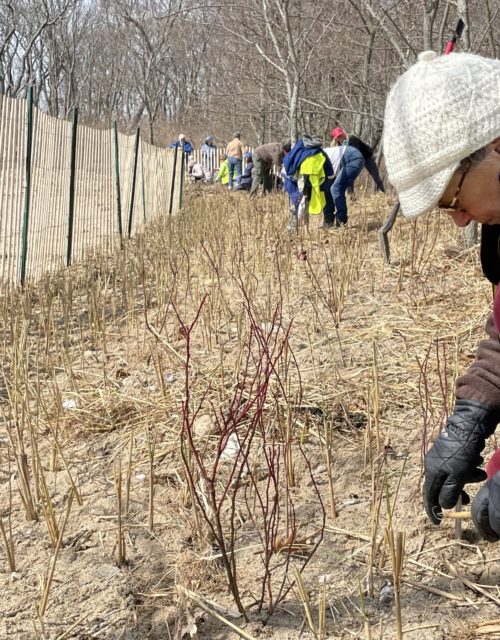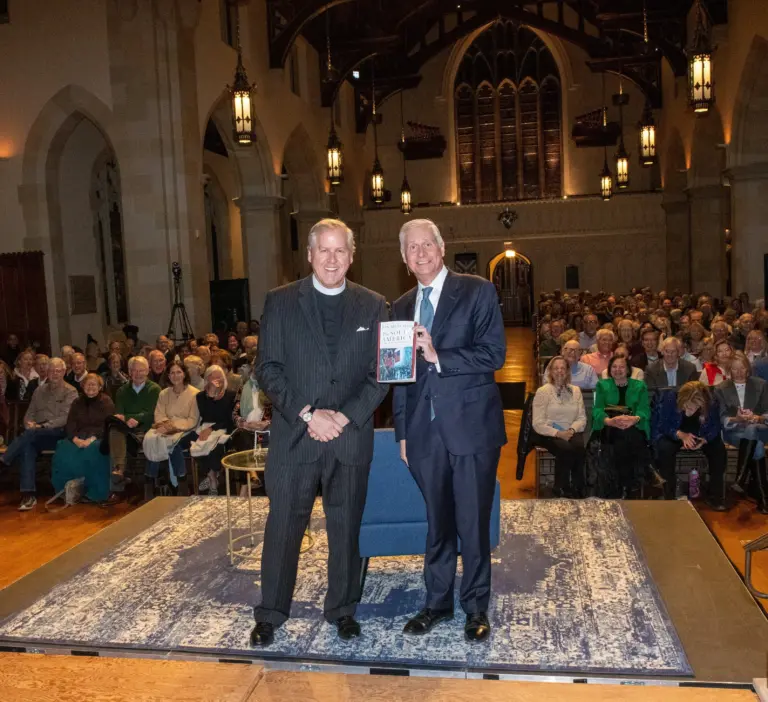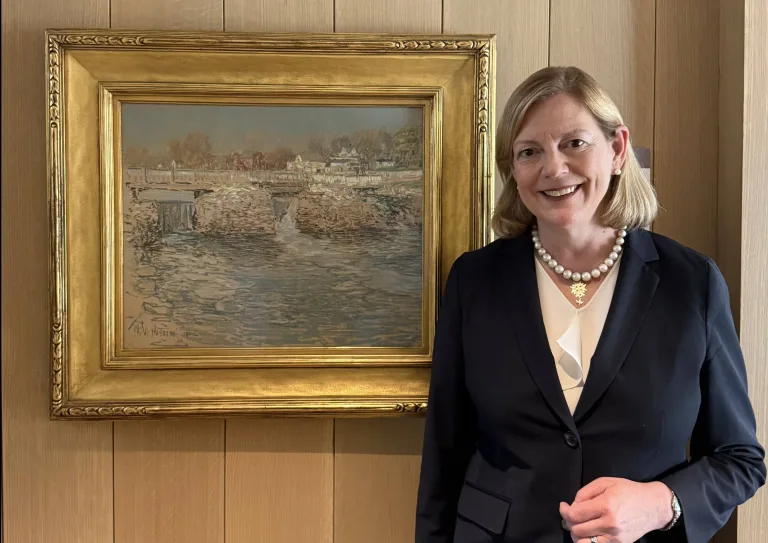By Jane Kuesel

Native plants at Greenwich Point are essential to its well-being. When we talk about native plants (which includes trees and shrubs), though, what do we mean? Natives are the plants that have grown naturally in this area for hundreds if not thousands of years without human introduction. During that time, they have co-evolved and co-existed not only with the area’s climate, light, and soil conditions, but also with the native birds, insects and other wildlife. When we substitute plants, shrubs, and trees from other parts of the country or world for our natives, our native birds and insects often lose their sources of food, butterflies and moths lose their host plants, and the habitat for birds, insects, and small animals is harmed.
Some non-native plants do more than take the place of natives that provide food and habitat. These plants become invasive, proliferating to choke out natives, re-seeding themselves far and wide. Invasive non-natives will displace native vegetation by outcompeting for nutrients in the soil and blocking sunlight. At Greenwich Point, invasive vines such as wisteria, English ivy, honeysuckle, and mile-a-minute crawl up and around trees. Other plants, including mugwort with its dense spreading root system and garlic mustard with its allelopathic properties that prevent the growth of other plants, greatly reduce the diversity of our native vegetation. The consequences reach beyond the landscape. According to Doug Tallamy, ecologist and author of Nature’s Best Hope, the loss of native plants and other habitat destruction has been linked to the loss of insect and bird populations over the last 50 years or so.
The Friends of Greenwich Point works regularly throughout the year to add to the native plants, trees, and shrubs already at the Point. The Friends are replacing non-native invasive plant species with natives to provide food and shelter for a variety of birds, insects and other wildlife. With so many non-native invasive plants that have taken over the Point, native vegetation needs our help to provide a healthy habitat.
In consultation with (and assistance from) the Town of Greenwich, the Friends identify, purchase, and plant native plants that are right for the different locations at the Point. For example, in March, our volunteers added native beach grass, bayberry, Virginia rose, and groundsel to the sandy beach area between the second and third bridges. These plants and shrubs will help stabilize the shoreline as well as support wildlife habitat. Two white oaks will also be added to that area, along with holly and juniper trees. As the area develops, the Friends and the Town will monitor the progress of the project, add more native plant species as needed, and weed out any invasives.
The Friends, through its hard-working volunteers, also has regular workdays to remove invasive plants. In winter, the Friends have vine-cutting days to free the trees and remove any new vines that have grown during the previous year. In the warmer months, there are work days to remove invasives through both weeding and vine cutting. The Friends have been successful in making significant progress, but many areas need regular maintenance to keep them under control.
The Friends also have developed a meadow at the Point over the last two years. Meadows are important habitats for pollinators, birds, and small mammals. Initially, this sunny spot near the Seaside Garden had naturally occurring milkweed and goldenrod. We added additional natives: mountain mint, yarrow, verbena, black-eyed susans, salvia, primrose, asters, and columbine. Mugwort and other invasives were weeded out from the meadow. This area is another ongoing project, with natives added and invasives removed on a regular basis.
With the work on the meadow, the Friends were able to register that habitat as a monarch waystation with Monarch Watch. To qualify, we needed to do more than identify a sunny location and add the milkweed plants that are native to our area. We needed to add nectar plants to feed the butterflies, implement a plan to manage the area, and agree not to use pesticides. It requires an ongoing stewardship of the Point’s meadow.
In the words of Doug Tallamy, “gardening in the traditional sense is optional, but earth stewardship is not.” Each of us can be more effective stewards of our own gardens by planting more native plant species. You can use the National Wildlife Federation’s Native Plant Finder, to find natives in our area. If you put in your zip code, the website will identify the native plants, trees, and shrubs for your area. For example, in Old Greenwich, there are 11 varieties of willow (salix) that are native. According to the website, these varieties are a caterpillar host plant to 377 species of butterflies and moths in our area. The Monarch Watch website has suggestions of native plants to nurture the monarchs. The Connecticut Botanical Society also has a helpful website at: https://www.ct-botanical-society.org/gardening-with-natives/.
Identifying and removing invasive plants from your garden is another important form of stewardship. While some invasives are easily identified by the way they crowd out your other plants or encircle your trees, other invasives spread by broadcasting their seeds or growing berries that the birds spread to the whole neighborhood. The Town of Greenwich website offers resources on identifying and dealing with invasive species that are a growing problem for local biodiversity at https://www.greenwichct.gov/1936/Invasive-Species-Resources
Volunteers are always welcome to join us at the Point for our work days and vine cutting. You can find out more information about the Friends of Greenwich Point, our programs and volunteer days, membership to support our work, and more at www.friendsofgreenwichpoint.org.
Jane Kuesel is President of the Friends of Greenwich Point.




